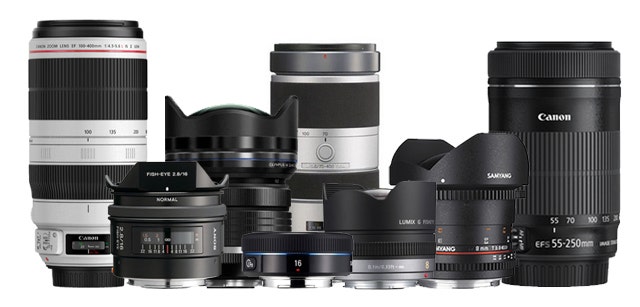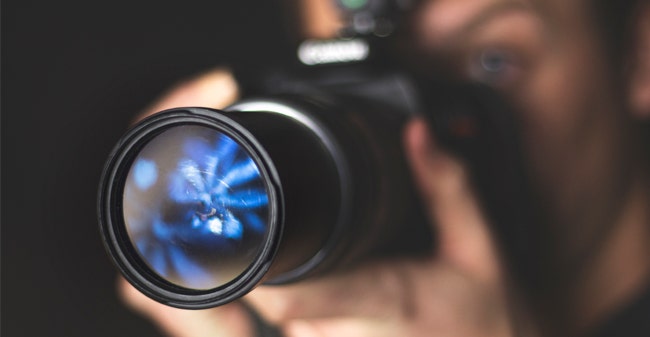
Lenses are arguably the most important part of your camera set-up, since they act like your eyes into the world of photography; it goes without saying that they make or break your final product.
A top camera lens controls the image projected onto your imaging sensor, and ultimately what photos you take. As such, many photographers would prefer to shoot with an average camera and a great lens, than the opposite way around.
Professional photographers will have an army of lenses to choose from, but for the everyday punter, a new lens is a pretty big deal. And rightfully so.
This camera lenses guide aims to act as an information resource and to help you buy your next camera lens.
What to look out for?
Basically this guide can help anyone who currently owns (or is looking to own) any type of camera that enables you to change your lens, the most common type being a digital SLR.
Be aware that choosing the right lens is a tricky prospect, which can often cost as much, if not more, than the actual body itself.
Of course, like that outfit you could once fit into, ten years ago, but haven’t tried on for ages, if you don’t have the right body then the lens won’t matter.
First, you have to ensure you’re buying the lens that fits the brand of camera you own, or is at least compatible with your camera. Most of the main players apply their own lens mounts to their cameras, meaning that a Canon DSLR lens will not work with your Nikon camera.
Next is working out if the lens is specifically designed for that particular camera. Although a lens designed for a 35mm film camera will likely fit onto your SLR, it may be ever so slightly larger, which will cause adverse effects like cropping the image.
Because of these technical issues around lenses, it’s always a good idea to consult your camera specialist before purchasing.
Getting the focal length right
Once you’ve worked out these basics, it’s time to weigh up the key factor of any lens: the focal length.
The focal length is the distance between the lens and the image sensor when the subject is in focus, stated in millimetres. As the Nikon website helps to illustrate, zoom lenses give the range between the minimum and maximum focal lengths.
Without descending into a science lesson, the smaller the focal length measurement, the wider the angle of view will be. For example, an 18mm focal length lens will produce a wide shot, great for landscapes. In contrast, a 200mm lens will produce a close-up shot.
Did you know? The human eye sees at roughly a 50mm focal length.
| Focal Length (35mm equivalent) | Lens |
| <20mm | Extreme wide angle |
| 21-35mm | Wide angle |
| 35-70mm | Normal |
| 70-135mm | Telephoto |
| 135-300mm | Extreme telephoto |
Therefore, it’s important to work out what you’ll want this new lens for. If you’re after a beautiful landscape shot of a sunset down on the beach, you’ll prefer a wide-angle/low focal length. If you’re after portraits or a close-up zoom of a bird, the small angle/high focal length lens will suit you much better.
Be sure about aperture
Aperture is often displayed as, say, f/2.8. This number refers to the maximum amount of light which the lens can take. Lenses with larger maximum apertures (counter-intuitively, these are the lower numbers) are capable of gathering more light.
An f/1.8 lens is able to use more light, which means it can be used in lower-light situations without having to use a flash, and is capable of producing a shallower depth of field.
Some zoom lenses have a variable aperture number and changes depending on focal length. Take an 18-200mm, f/3.5-5.6 lens. Although the maximum aperture is f/3.5 at 18 mm, it would change to f/5.6 with the zoom at 200 mm.
Other things to consider
Format - DX v FX
Displayed on the lens is either the DX or FX format symbol. While FX format lenses work with full frame size sensors, DX lenses will work only with the smaller of your camera’s sensors. Without getting too technical, this means that, in essence, a DX format lens may crop your photo due to the differing size sensors of the camera. Just something to be wary of. You can read more about the differences between DX and FX here.
Creative lenses
Beyond the standard zoom lenses lies a treasure trove of creative lenses you might be interested in. One such example is the fisheye lens, which produce a strong visual distortion to generate a hemispherical image.
Tilt-shift lenses allow you to extend or shorten the depth of focus of what you’re photographing (see picture below). Architects and artists who deal with miniatures, in particular, love this type of lens.

There are now even some 3D lenses to really get your creative juices flowing.
Which type of lens is best for you?
So why don’t we all just have 15-400mm, f/1.8 lenses attached to our cameras? Well, the two main reasons are size and price. A lens of this magnitude would be massive and cost a fortune. Often it’s about striking a balance that you’re happy with.
Because there are so many lenses available, you’ll be able to find one that matches all your requirements. For example, an everyday traveller will want to avoid changing lenses and will likely go for an affordable, compact, durable and versatile lens.
But a photographer who likes taking night shots of street markets will require an aperture lens designed for lower-light situations. A parent wanting to take pictures of their constantly-moving kids will focus (again, pun intended) on an all-rounder lens that has a bit more speed.
Finally, a landscape photographer will primarily consider the wide angle of the lens. While some enjoy playing around with shallower depths of field and such with prime lenses, a wide-angle zoom lens will allow this type of photographer to shoot naturally in conditions that would have otherwise require a flash.
What we’re getting at is that each individual photographer is different. But the more you know about lenses the better and hopefully this guide has helped with that.
Here at Camera House, we offer a great selection of lenses and all the necessary accessories, so feel free to browse our range with your newfound knowledge.


